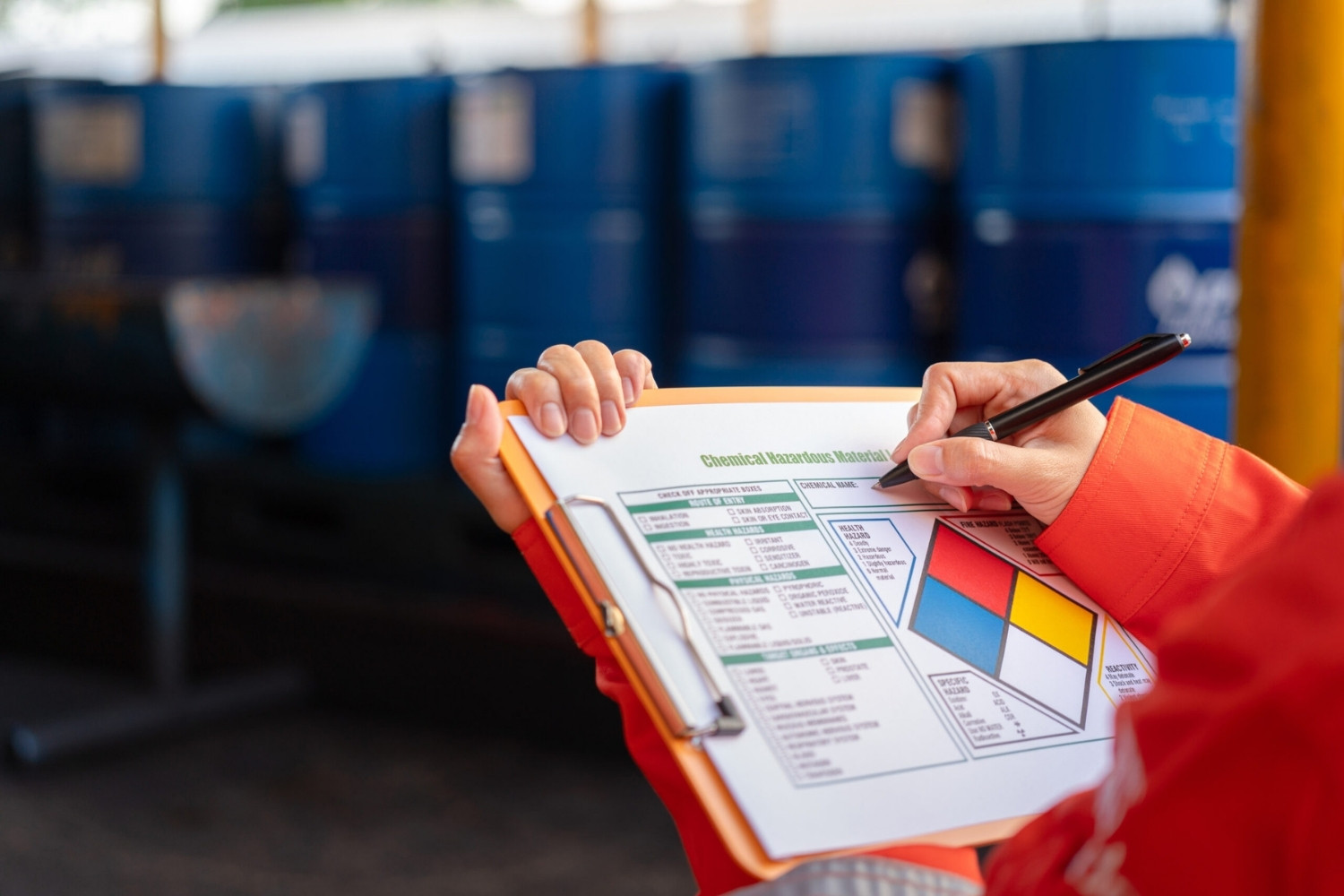Understanding OSHA’s Hazard Communication Standard is crucial for maintaining a safe workplace. This quiz will challenge your knowledge of the key elements of hazard communication, including labeling, safety data sheets, and employee training. Sharpen your awareness and ensure you’re well-versed in the protocols that keep everyone safe. Good luck!
We recommend that you do not leave the page that you are taking this quiz in. Stay honest 🙂
OSHA Hazard Communication Quiz Questions Overview
1. What does OSHA’s Hazard Communication Standard primarily aim to achieve?
To regulate the use of hazardous chemicals
To ensure that information about chemical hazards is communicated to workers
To ban the use of hazardous chemicals in the workplace
To provide medical treatment for chemical exposure
2. Which document provides detailed information about the properties and handling of a chemical?
Label
Safety Data Sheet (SDS)
Employee Handbook
Inspection Report
3. What information must be included on a chemical label under OSHA’s Hazard Communication Standard?
Chemical name, hazard warnings, and manufacturer information
Chemical name and price
Manufacturer information and price
Hazard warnings and price
4. Which of the following is NOT a requirement of the Hazard Communication Standard?
Developing a written hazard communication program
Labeling all hazardous chemicals
Providing Safety Data Sheets (SDS) for all hazardous chemicals
Banning all hazardous chemicals in the workplace
5. Who is responsible for ensuring that Safety Data Sheets (SDS) are available to employees?
Employees
Employers
OSHA inspectors
Chemical manufacturers
6. What is the purpose of employee training under the Hazard Communication Standard?
To teach employees how to manufacture chemicals
To ensure employees understand the hazards and safe handling of chemicals
To train employees in emergency medical procedures
To prepare employees for OSHA inspections
7. When must employees be trained on hazardous chemicals?
Before they are initially assigned to work with hazardous chemicals
Only during annual safety meetings
Whenever a new chemical is introduced to the workplace
Both before initial assignment and whenever a new chemical is introduced
8. What does the acronym GHS stand for in the context of hazard communication?
Global Hazardous Substances
Globally Harmonized System
General Health and Safety
Global Health Standards
9. Which pictogram represents a health hazard under the GHS?
Flame
Skull and crossbones
Exclamation mark
Silhouette of a person with a starburst
10. What should an employee do if they discover a chemical container without a label?
Ignore it and continue working
Report it to their supervisor immediately
Label it themselves
Dispose of the chemical
11. How often must the written hazard communication program be reviewed and updated?
Annually
Every six months
Whenever new chemicals are introduced
Both annually and whenever new chemicals are introduced
12. What is the primary purpose of hazard communication labels?
To provide pricing information
To identify the chemical and its hazards
To offer marketing information
To list the chemical’s ingredients
13. Which section of the Safety Data Sheet (SDS) provides information on first-aid measures?
Section 1: Identification
Section 4: First-Aid Measures
Section 8: Exposure Controls/Personal Protection
Section 16: Other Information
14. What does the signal word ‘Danger’ indicate on a chemical label?
A less severe hazard
A more severe hazard
A non-hazardous chemical
A chemical that is safe to handle
15. Who is responsible for classifying the hazards of chemicals?
Employers
Employees
Chemical manufacturers and importers
OSHA inspectors
16. What type of information is provided in Section 8 of the Safety Data Sheet (SDS)?
First-aid measures
Fire-fighting measures
Exposure controls/personal protection
Accidental release measures
17. Which of the following is a physical hazard under the Hazard Communication Standard?
Carcinogenicity
Flammability
Reproductive toxicity
Respiratory sensitization
18. What should be done if a Safety Data Sheet (SDS) is not available for a hazardous chemical?
Use the chemical without precautions
Request the SDS from the manufacturer or supplier
Create a makeshift SDS
Ignore the missing SDS
We recommend that you do not leave the page that you are taking this quiz in. Stay honest 🙂
Can Your Friends Do Better Than You in This Quiz?
Share this quiz with your friends and compare results.
Was this page helpful?
More Popular Health & Wellness Quizzes:
-
Basic ECG Quiz
-
Pancreatic Cancer Quiz
-
Trauma-Informed Care Quiz
-
Huntington’s Disease Quiz
-
Diaper Quiz
-
Am I Fat Quiz











